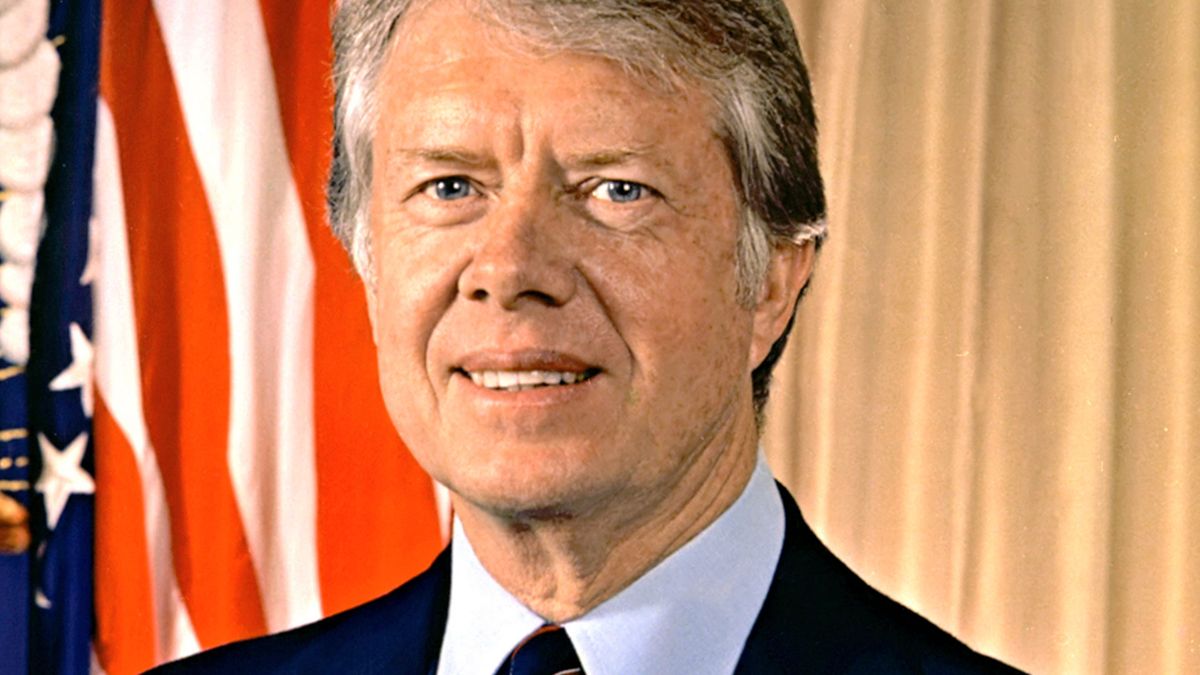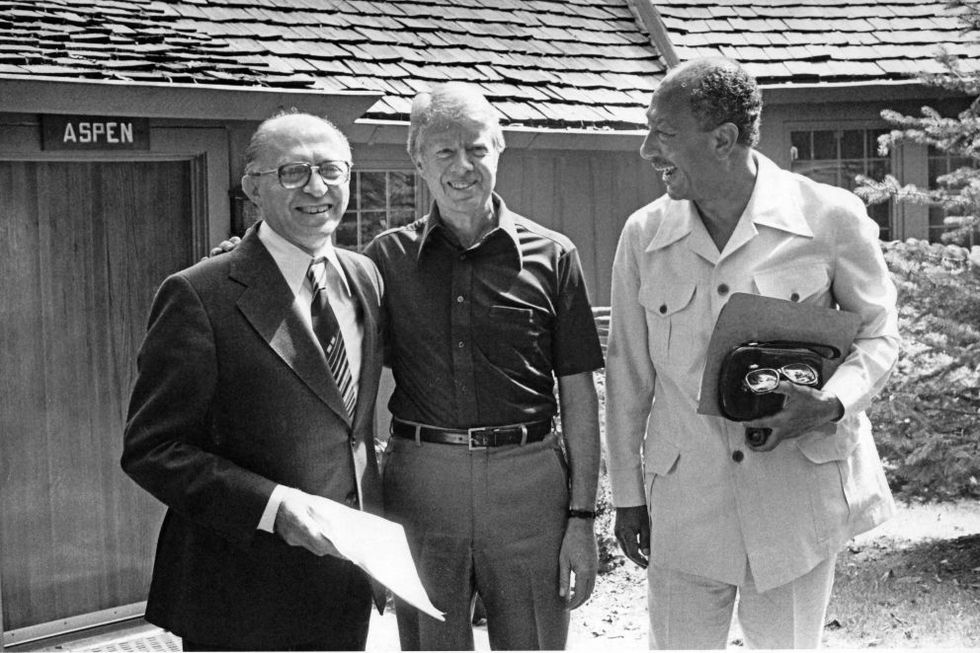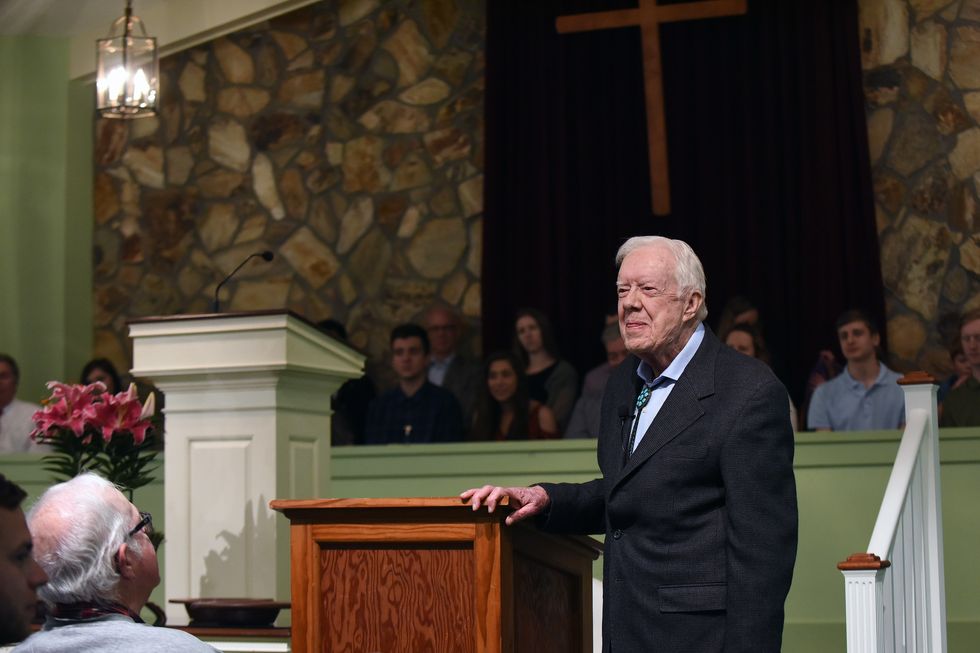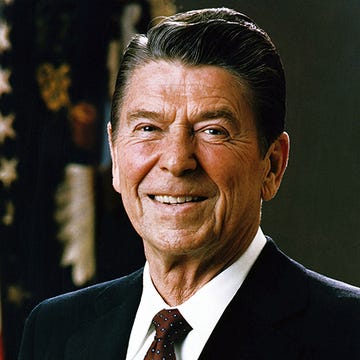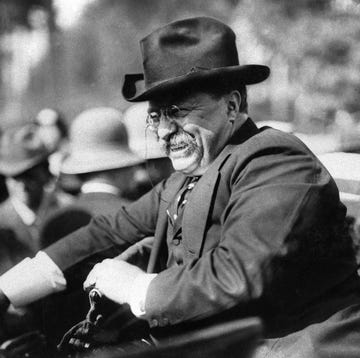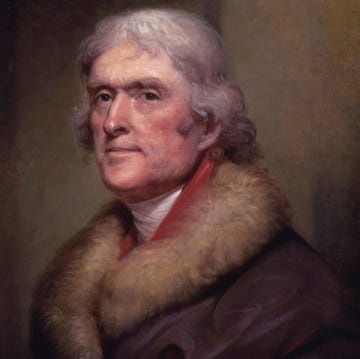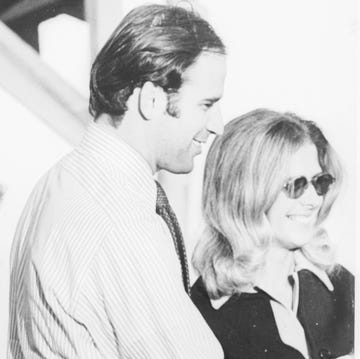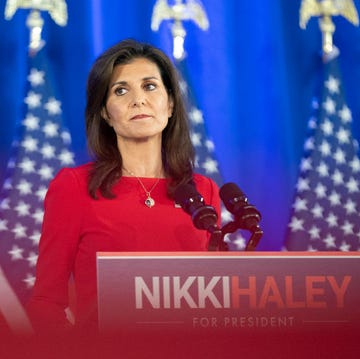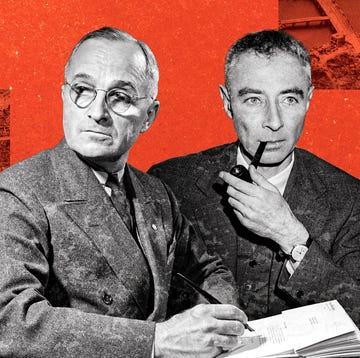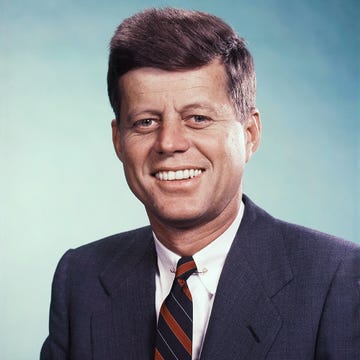1924-present
Jimmy Carter Today: Former President Reacts to Wife Rosalynn’s Death
Former President Jimmy Carter, 99, is mourning the death of his beloved wife, Rosalynn Carter, who died on November 19 at age 96. Rosalynn passed away peacefully with her family by her side in the couple’s hometown of Plains, Georgia, according to a news release from The Carter Center.
The Carters were married longer than any other presidential couple and celebrated their 77th wedding anniversary in July. “Rosalynn was my equal partner in everything I ever accomplished,” Jimmy said in a statement. “She gave me wise guidance and encouragement when I needed it. As long as Rosalynn was in the world, I always knew somebody loved and supported me.”
The former first lady entered hospice care days before her death. The Carter Center revealed in May that Rosalynn had dementia. Jimmy has been in hospice care since February. Still, the couple made their final public appearance together at the annual Plains Peanut Festival on September 23.
Who Is Jimmy Carter?
Jimmy Carter was the 39th president of the United States and served as the nation’s chief executive during a time of serious problems at home and abroad. Carter’s perceived mishandling of these issues led to defeat in his bid for reelection. He later turned to diplomacy and advocacy, founding The Carter Center in 1982 with his late wife, Rosalynn. For these efforts, he was awarded the Nobel Prize for Peace in 2002. Carter is the author of more than 30 books, most recently Faith: A Journey for All. He has been in hospice care since February 2023.
Quick Facts
FULL NAME: James Earl Carter Jr.
BORN: October 1, 1924
BIRTH CITY: Plains, Georgia
SPOUSE: Rosalynn Carter (1946-2023)
CHILDREN: John, James, Donnel, and Amy
ASTROLOGICAL SIGN: Libra
Early Life: Family and Education
James Earl Carter Jr. was born on October 1, 1924, in Plains, Georgia. His father, James Sr., went by Earl and was a hardworking peanut farmer who owned his own small plot of land as well as a warehouse and store. His mother, Bessie Lillian Gordy Carter, also went by her middle name. Lillian was a registered nurse who in the 1920s had crossed racial divides to counsel Black women on health care issues. Jimmy is the oldest of James and Lillian’s four children, including two daughters and a son. (His siblings are now deceased.)
When Carter was 4 years old, the family relocated to Archery, a town approximately two miles from Plains. It was a sparsely populated and deeply rural town, where mule-drawn wagons remained the dominant mode of transportation, and electricity and indoor plumbing were still uncommon. Carter was a studious boy who avoided trouble and began working at his father’s store at the age of 10. His favorite childhood pastime was sitting with his father in the evenings, listening to baseball games and politics on the battery-operated radio.
Both of Carter’s parents were deeply religious, something they passed down to their son. They belonged to Plains Baptist Church and insisted that Carter attend Sunday school, which his father occasionally taught. Carter attended the all-white Plains High School while the area’s majority Black population received educations at home or at church. Despite this pervasive segregation, two of Carter’s closest childhood friends were Black, as were two of the most influential adults in his life, his nanny, Annie Mae Hollis, and his father’s employee Jack Clark.
While the Great Depression hit most of the rural South very hard, the Carters managed to prosper during these years, and by the late 1930s, his father had over 200 workers employed on his farms. In 1941, Carter became the first person from his father’s side of the family to graduate from high school.
Carter studied engineering at Georgia Southwestern Junior College before joining the Naval ROTC program to continue his engineering studies at the Georgia Institute of Technology. He then applied to the highly competitive Naval Academy in Annapolis, Maryland, which accepted him to begin studies in the summer of 1943. With his reflective, introverted personality and small stature—Carter stood only 5 feet 9 inches tall—he didn’t fit in well among his fellow midshipmen.
Nevertheless, Carter continued to excel at academics, graduating in the top 10 percent of his class in 1946. While on leave in the summers, Carter had reconnected with a girl named Rosalynn Smith whom he had known since childhood. They married in July 1946.
Navy Man Turned Peanut Farmer
The Navy assigned Carter to work on submarines, and in the early years of their marriage, the Carters—like many a military family—moved frequently. After a training program in Norfolk, Virginia, they moved out to Pearl Harbor, Hawaii, where Carter was an electronics officer on the USS Pomfret. Subsequent postings took the family to Groton, Connecticut; San Diego; and Washington.
In 1952, Carter was assigned to work with Admiral Hyman Rickover developing a nuclear submarine program in Schenectady, New York. The brilliant and notoriously demanding admiral made a profound impression on Carter. “I think, second to my own father, Rickover had more effect on my life than any other man,” he later said. Two interview questions that Rickover asked him inspired the name for the future president’s first book, Why Not the Best? (1975).
In July 1953, Carter’s father passed away from pancreatic cancer, and in the aftermath of his death, the farm and family business fell into disarray. Although Rosalynn initially objected, Carter moved his family back to rural Georgia so he could care for his mother and take over the family’s affairs. In Georgia, Carter resuscitated the family farm and became active in community politics, winning a seat on the Sumter County Board of Education in 1955 and eventually becoming its chairman.
Accomplishments as a Georgia Politician
The 1950s were a period of great change in the American South. In the landmark 1954 case Brown v. Board of Education, the United States Supreme Court unanimously ordered the desegregation of public schools, and in the aftermath of that decision, civil rights protestors vociferously demanded an end to all forms of racial discrimination. However, politics in the rural South still largely reflected the reactionary racial outlook of the “Old South.” Carter was the only white man in Plains to refuse to join a segregationist group called the White Citizens’ Council, and shortly afterward, he found a sign on the front door of his home that read: “Coons and Carters go together.”
It wasn’t until the 1962 Supreme Court ruling in Baker v. Carr, which required that voting districts be redrawn in a way that stopped privileging rural white voters, that Carter saw an opportunity for a “new Southerner,” such as he considered himself, to win political office. That same year, he ran for the Georgia State Senate against a local businessman named Homer Moore. Although the initial vote showed that Moore had won the election, it was blatantly obvious that his victory was the result of widespread fraud. In one precinct, 420 ballots were cast even though only 333 were issued. Carter appealed the outcome, and a Georgia judge discarded the fraudulent votes and declared Carter the winner. As a two-term state senator, Carter earned a reputation as a tough and independent politician, curbing wasteful spending and steadfastly supporting civil rights.
In 1966, after briefly considering a run for the United States House of Representatives, Carter instead decided to run for governor. However, in the midst of a white backlash to the Civil Rights Movement, Carter’s liberal campaign failed to gain momentum in the Democratic primaries, and he finished a distant third place. The eventual winner was Lester Maddox, an ardent segregationist who had infamously barricaded the doors of his restaurant and brandished an axe to ward off Black customers.
Governors were limited to one term under Georgia law, though, so Carter almost immediately began positioning himself for the 1970 gubernatorial election. This time around, Carter ran a campaign specifically targeted at the white rural voters who had rejected him as too liberal in 1966. Carter publicly opposed busing as a method of integrating public schools, limited public appearances with Black leaders, and actively courted the endorsements of several noted segregationists, including Governor Maddox. He so completely reversed his staunch commitment to civil rights that the liberal Atlanta Constitution Journal called him an “ignorant, racist, backward, ultra-conservative, red-necked South Georgia peanut farmer.” Nevertheless, the strategy worked, and in 1970, Carter defeated Carl Sanders to become governor of Georgia.
Once he was elected governor, Carter largely returned to the progressive values he had promoted earlier in his career. He publicly called for an end to segregation, increased the number of Black officials in state government by 25 percent, and promoted education and prison reform. Carter’s signature accomplishment as governor was slashing and streamlining the enormous state bureaucracy into a lean and efficient machine. However, Carter showed disdain for the niceties of political decorum and alienated many traditional Democratic allies, with whom he might otherwise have worked closely.
1976 Presidential Campaign
Always forward-thinking, Carter carefully observed the national political currents of the 1970s. After the liberal George McGovern got pounded by Republican Richard Nixon in the 1972 presidential election, Carter decided the Democrats needed a centrist figure to regain the presidency in 1976. When the Watergate scandal shattered American confidence in Washington politics, Carter further concluded that the next president would need to be an outsider. He thought he fit the bill on both counts.
Carter was one of 10 candidates for the Democratic presidential nomination in 1976, and at first, he was probably the least well-known. However, in a time of deep frustration with establishment politicians, Carter’s anonymity proved an advantage. He campaigned on such centrist themes as reducing government waste, balancing the budget, and increasing government assistance to the poor.
The centerpieces of Carter’s appeal were his outsider status and his integrity. “I’ll never tell a lie,” Carter famously declared. “I’ll never avoid a controversial issue.” Another of his pithy campaign slogans was “A Leader, For a Change.” These themes hit home with an electorate feeling betrayed by its own government during the Watergate scandal.
Carter secured the Democratic nomination to challenge the Republican incumbent Gerald Ford, Nixon’s erstwhile vice president who had assumed the presidency when Nixon resigned in the aftermath of Watergate. Although Carter entered the race with a double-digit lead over the unexciting Ford, he made several gaffes that narrowed the polls. Most prominently, in an interview with Playboy, Carter admitted to committing adultery “in his heart” and made several other glib remarks about sex and infidelity that alienated many voters. Although the election turned out much closer than initially expected, Carter nevertheless won to become the 39th president of the United States of America.
Presidency
Carter assumed the presidency in 1977 at a time of considerable optimism, initially enjoying sky-high approval ratings. Symbolizing his commitment to a new kind of leadership, after his inaugural address Carter got out of his limousine to walk to the White House amongst his supporters.
Carter’s main domestic priority involved energy policy. With oil prices rising, and in the aftermath of the 1973 oil embargo, Carter believed it imperative to cure the United States of its dependence on foreign oil. Although Carter succeeded in decreasing foreign oil consumption by 8 percent and developing huge emergency stores of oil and natural gas, the Iranian Revolution of 1979 again drove up oil prices and led to long lines at gas stations, overshadowing Carter’s achievements.
Camp David Accords
Carter’s foreign policy centered around a promise to make human rights a central concern in the United States’ relations with other countries. He suspended economic and military aid to Chile, El Salvador, and Nicaragua in protest of those regimes’ human rights abuses. But Carter’s most notable foreign policy achievement was his successful mediation of the 1978 Camp David Accords between Israel and Egypt, leading to a historic peace treaty in which Israel withdrew from the Sinai Peninsula, and the two sides officially recognized each other’s governments.
Despite these noteworthy achievements, Carter’s presidency was widely considered a failure. He had very poor relationships with Congress and the media, stifling his ability to enact legislation or effectively communicate his policies. In 1979, Carter delivered a disastrous speech, referred to as the “Crisis of Confidence” speech, in which he seemed to blame America’s problems on the poor spirit of its people.
Several foreign policy blunders also contributed to Carter’s loosening grip on the presidency. His secret negotiations to return the Panama Canal to Panama led many people to believe he was a weak leader who had “given away” the canal without securing necessary provisions for defending American interests.
Iran Hostage Crisis
Probably the biggest factor in Carter’s declining political fortunes, however, was the Iranian Hostage Crisis. In November 1979, radical Iranian students seized the United States Embassy in Tehran, taking 66 Americans hostage. Carter’s failure to negotiate the hostages’ release, followed by a badly botched rescue mission, made him look like an impotent leader who had been outmaneuvered by a group of radical students. The hostages were held for 444 days before finally being released on the day Carter left office in 1981.
Ronald Reagan, the former actor and governor of California, challenged Carter for the presidency in 1980. Reagan ran a smooth and effective campaign, simply asking voters, “Are you better off than you were four years ago?” Most were not; Reagan crushed Carter in the 1980 election, which was essentially a referendum on a failed presidency. As the New York Times put it, “On Election Day, Mr. Carter was the issue.”
Humanitarian Work through The Carter Center
Despite a largely unsuccessful one-term presidency, Carter later rehabilitated his reputation through his humanitarian efforts after leaving the White House. He is now widely considered one of the greatest ex-presidents in American history.
He has worked extensively with Habitat for Humanity and founded The Carter Center in 1982 to promote human rights and alleviate suffering across the globe. In particular, Carter and his nonprofit has worked effectively to develop community-based health care systems in Africa and Latin America, to oversee 114 elections in fledgling democracies as of March 2023, and to promote peace in the Middle East. The Center’s Guinea Worm Eradication Program has helped to nearly eradicate the parasitic disease among humans. According to the nonprofit, there were an estimated 3.5 million cases in Africa and Asia in 1986 compared to just 13 provisional cases worldwide in 2022.
In 2002, Carter received the Nobel Peace Prize “for his decades of untiring effort to find peaceful solutions to international conflicts, to advance democracy and human rights, and to promote economic and social development.” Delivering his Nobel Lecture in 2002, Carter concluded with words that can be seen as both his life mission and his call to action for future generations. “The bond of our common humanity is stronger than the divisiveness of our fears and prejudices,” he said. “God gives us the capacity for choice. We can choose to alleviate suffering. We can choose to work together for peace. We can make these changes—and we must.”
Because of his tireless work both before and since his presidency in support of equality, human rights, and the alleviation of human suffering, Carter will be remembered as one of the nation’s great social activists.
Wife and Children
Jimmy and Rosalynn Carter were married for more than 77 years—longer than any other presidential couple in history—and celebrated their final anniversary together in July 2023. Rosalynn, who had dementia, died later that year on November 19, just days after entering hospice care.
Like her husband, Rosalynn also grew up in Plains, Georgia. They first met as children; Jimmy’s mother, Lillian, was one of the nurses who helped deliver Rosalynn in 1927, and she took her son to check up on the infant and her mother a few days after Rosalynn’s birth.
Friendly growing up, Jimmy and Rosalynn reconnected when he was home from college. A romance soon began. They wed on July 7, 1946.
During Carter’s years in the military, the couple had three sons: John William, born in 1947 and known as Jack; James Earl Carter III, born in 1950 and known as Chip; and Donnel Jeffrey, born in 1952 and who goes by Jeff. Later, they had a daughter, Amy, born in 1967. Still a child when her father was elected president, Amy grew up somewhat in the national spotlight unlike her brothers.
Jimmy also has 11 grandchildren and 14 great-grandchildren. In 2015, the Carters’ 28-year-old grandson Jeremy (from their son Jeff) died of a heart attack.
Books and Personal Life
A prolific writer, Carter has authored 32 books in his lifetime, all but one of which were published after his presidency. He wrote several memoirs, including A Full Life: Reflections at Ninety (2015); issue-based nonfiction works such as Palestine Peace Not Apartheid (2006) and A Call to Action: Women, Religion, Violence, and Power (2014); a book of poetry, Always a Reckoning, and other Poems (1995); and a historical fiction novel, The Hornet’s Nest (2003), about the Revolutionary War. His daughter, Amy, illustrated his children’s book, The Little Baby Snoogle-Fleejer (1996), that Carter based on a story he used to tell his kids. His most recent book, Faith: A Journey for All was published in 2018 and reflects on the importance of spirituality in his own life and its influence in shaping American history.
A devout Christian, Carter was raised Southern Baptist, though he left the Southern Baptist Convention in 2000 after disagreeing with the denomination’s stances that women shouldn’t be pastors and wives should be subservient to their husbands. He and Rosalynn attend Plains’ Maranatha Baptist Church, which they joined in 1981 and where they were both deacons. A well-known Sunday school teacher, Carter first began teaching Bible lessons while at the Naval Academy and continued throughout his life. Hundreds of people from across the country flocked to his Sunday school services at Maranatha for decades until he stopped teaching in late 2019.
Carter has many hobbies, including fly-fishing, woodworking, painting, and rooting on the Atlanta Braves baseball team. He was an avid runner until age 80 and a third-generation winemaker. In a 2017 interview with Oprah Winfrey, the former president said he and his wife challenged themselves to find new hobbies that they could enjoy together. That led them to learn how to downhill ski when Carter was 62 and Rosalynn was 59.
Health Challenges and Hospice
On August 12, 2015, Carter underwent surgery to remove a mass from his liver. Eight days later, the 90-year-old announced he was diagnosed with cancer that had spread to other parts of his body. On August 20, Carter held a news conference in which he said doctors had found four “very small spots” of melanoma on his brain. After undergoing a treatment regime that included targeted radiation, the former president announced he was cancer-free during one of his Sunday school lessons in early December 2015.
On March 21, 2019, Carter became the longest-living U.S. president at 94 years and 172 days old, surpassing the mark established by George H.W. Bush. That year also brought more health challenges. In May, Carter broke his hip during a fall and had hip replacement surgery. In October, two more falls resulted in stitches above his eye then a “minor” pelvic fracture. Carter also had surgery that November to relieve pressure on his brain caused by bleeding from the falls.
On February 18, 2023, the Carter Center announced the 98-year-old decided to receive hospice care at home “after a series of short hospital stays.” The former president has now been in hospice for more than half a year. “We thought at the beginning of this process that it was going to be in five or so days,” his grandson Jason Carter told The New York Times in September. “I was down there with him in the hospital and then said goodbye. And then we thought it was going to be in that week that it was coming to the end. And it’s just now been seven months.”
Fact Check: We strive for accuracy and fairness. If you see something that doesn’t look right, contact us!
The Biography.com staff is a team of people-obsessed and news-hungry editors with decades of collective experience. We have worked as daily newspaper reporters, major national magazine editors, and as editors-in-chief of regional media publications. Among our ranks are book authors and award-winning journalists. Our staff also works with freelance writers, researchers, and other contributors to produce the smart, compelling profiles and articles you see on our site. To meet the team, visit our About Us page: https://www.biography.com/about/a43602329/about-us
Adrienne directs the daily news operation and content production for Biography.com. She joined the staff in October 2022 and most recently worked as an editor for Popular Mechanics, Runner’s World, and Bicycling. Adrienne has served as editor-in-chief of two regional print magazines, and her work has won several awards, including the Best Explanatory Journalism award from the Alliance of Area Business Publishers. Her current working theory is that people are the point of life, and she’s fascinated by everyone who (and every system that) creates our societal norms. When she’s not behind the news desk, find her hiking, working on her latest cocktail project, or eating mint chocolate chip ice cream.
Tyler Piccotti joined the Biography.com staff as an Associate News Editor and is now the News and Culture Editor. He previously worked as a reporter and copy editor for a daily newspaper recognized by the Associated Press Sports Editors. In his current role, he shares the true stories behind your favorite movies and TV shows and profiles rising musicians, actors, and athletes. When he's not working, you can find him at the nearest amusement park or movie theater and cheering on his favorite teams.
